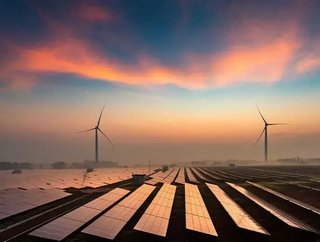The future of renewables procurement

Shylesh Muralidharan, Director of Product Management, Energy and Sustainability Services at ENGIE Impact on the future of renewables procurement
More than ever, businesses are looking for ways to implement changes to operations that will reduce their impact on the environment.
Most noticeably, in early 2020, Microsoft pledged to become carbon negative by 2030, and this was followed by a string of announcements by other organisations keen to show how they too are mitigating their use of natural resources and lowering emissions.
In recent years, driven by the growing affordability and availability, switching away from fossil fuels to renewables has become more straightforward.
Today, renewables produce more than 20% of the UK's electricity, and that figure is forecast to rise to 30% by 2030.
This represents a clear, new market opportunity for utility and renewable providers and developers, and it’s also one for businesses.
However, there are still barriers that exist for companies looking to integrate renewables - it requires a different approach and strategy to procurement than many will currently have in place.
Clearly, energy procurement is changing and will continue to do so for years to come. So, what does the future of energy procurement look like?
Climate-resilient assets will rise in value
Large, global companies are sitting on the forefront of sustainability and renewable energy procurement.
Nearly 50 percent of Fortune 500 companies have sustainability and renewable energy targets, and in 2018, C&I buyers procured a record 5.3 GW of renewable energy nationally.
This increase in investments in sustainability initiatives - and especially in renewable energy - is gathering momentum as the link between sustainability and financial performance becomes stronger.
Corporations are looking at these investments from a financial value perspective and beyond the initial, emotionally driven motivation.
As the world feels the increasing effects of climate change, there is value in sustainable and climate-resilient assets, and leading companies are not only reducing carbon emissions but generating financial returns while creating platforms and incentives as models for others to follow.
Upfront strategy development will be a “have-to-have”
It is important that corporations pursue their own unique sustainability journey and define their values and principles upfront before they get into the finer operational details.
Investment strategies must be backed by the right amount of metrics that can track progress effectively by analysing foundational metrics such as energy usage intensity, water usage intensity and GHG intensity of their operations.
Companies will continue to face (and overcome) hurdles
Despite the overall momentum in this space, renewable energy procurement in the broader C&I sector continues to face hurdles.
For example, traditional PPA structures are complex for small and medium-sized corporations, as they do not have adequate knowledge or understanding of incentives to get into long-term contracts.
But we see corporations overcoming these barriers innovatively, for example, signing PPA deals with other buyers (i.e., aggregated PPAs) and negotiating for more flexible contracts.
Also, financial instruments in the form of synthetic PPAs are cropping up, which provide some relief from longer term contracts by offering shorter terms at a premium.
Based on the risk profile of corporations, this market is evolving to offer differently structured renewable energy supply contracts for different types and sizes of buyers. All this is leading to a strong wave of adoption as more and more companies hop on the renewable energy bandwagon.
Renewable energy will become a competitive advantage
Another variable driving growth in this space is large companies pioneering business-to-business market incentives (also known as Renewable Value Chain Initiatives), that encourage upstream companies and midstream suppliers to produce products and services that are made by renewable energy.
If other companies adopt sustainability-influenced supply chains that rank suppliers based on their renewable energy commitments, the use of renewable energy could become a competitive advantage in the marketplace.
This causes a network effect for renewable energy adoption and we are already seeing tremendous growth in products and services with a sustainable supply chain.
The business case for adopting renewable energy is becoming clearer and more persuasive on a daily basis. Many organisations, big and small, are awake to this fact, and many others will soon join them.
The future of renewables procurement may be a step change to traditional methods, but the rewards for making that change and overcoming the hurdles will be worth it.
Read more about ENGIE Impact here.






